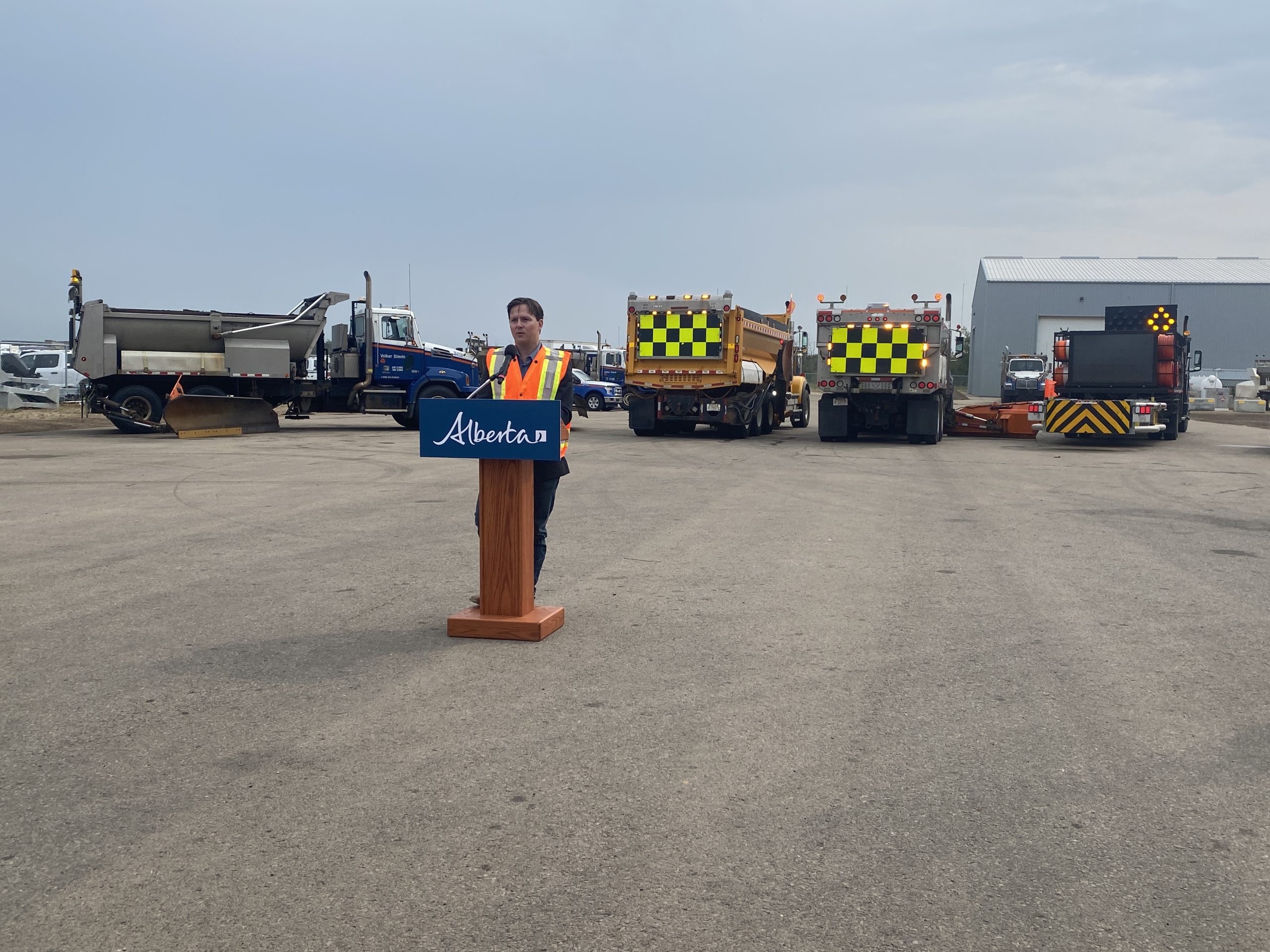Alberta roadside safety amendment worse than promised: AMA
Posted August 8, 2023 12:37 pm.
Last Updated August 8, 2023 6:41 pm.
An upcoming change to Alberta’s Traffic Safety Act meant to keep workers, first responders and drivers safe is being touted as a “common sense” move by the provincial government.
But it’s being met with anger by the group representing the province’s drivers.
Beginning Sept. 1, Albertans in the lane closest to a vehicle with flashing lights – like a police, paramedic, tow truck, maintenance worker or snow-plow vehicle – are required to slow down to 60 km/h or move over if they can do so safely.
Previously only tow-truck drivers and first responders – not maintenance workers or snow-plow vehicles – were protected under the Traffic Safety Act.
But the changes presented at a press conference Tuesday in Sherwood Park are different than the amendment passed in March 2022.

Devin Dreeshen, Alberta’s minister of transportation and economic corridors, at a press conference Aug. 8, 2023. (Laura Krause/CityNews)
Unlike most Canadian provinces, the law will not include all lanes of traffic.
While celebrating the inclusion of roadside workers, Jeff Kasbrick at the Alberta Motor Association said the amendment overall was “not as robust as it actually could be,” calling it a “bittersweet” announcement.
“Government is moving back from its commitment, and this is not what had been promised to Alberta’s essential tow operators, to first responders, as well as to the roadside workers that are included in today’s expanded framework,” said Kasbrick, vice-president of advocacy and operations.
“The majority of provinces across this country already include ‘slow down, move over’ legislation that does apply to all lanes of travel in the same direction. And so this wouldn’t have actually made Alberta unique, this would have actually aligned Alberta with other provinces and this would have created a far more consistent message.”
‘Consultations with Albertans’
Devin Dreeshen, Alberta’s minister of transportation and economic corridors, says the decision to not include all lanes came “through consultations with Albertans.”
“We wanted it to be simple. We wanted to make sure that the rules were the same. You don’t have to say, if it’s late at night, ‘is this three lanes, is this four lanes, two lanes,'” said Dreeshen.
“When we engaged with our roadside worker safety, with the department, to make sure that there is a free flow of traffic, regardless of what’s happening at the side of the road, this was the best solution that we came up with.”
The AMA had been lobbying the provincial government for years to make changes to the Traffic Safety Act. The group believed the law would apply to all lanes.
“I hear far too often from our operations that it is a regular occurrence that they are hearing screeching brakes and tires at the side of the road, or that they’re hearing motorists slam on their horn,” said Kasbrick. “And so these are very real and scary circumstances that they encounter on a regular basis, that we were on the cusp of being able to address.
“We had the support of Albertans, we had the unanimous support of the legislature, we were working to make sure that that robust public education was in place, and unfortunately there is some disappointment among our operators today.”
If the speed limit is slower than 60 km/h, drivers must slow down to the posted speed limit.
Failure to comply can result in a fine and three demerit points, the province says.








